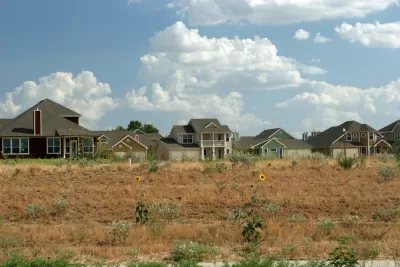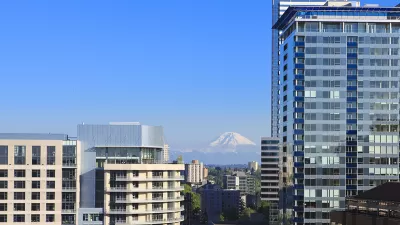All that empty acreage means that these big, rapidly developing cities don’t really have to sprawl.

In a recent survey, CommercialCafe attempted to quantify how much undeveloped land remains in the central business districts of a number of U.S. cities; the answer, in short, is a lot, but not where you might expect.
Dallas came in first, with Austin and San Antonio also in the top five (as well as Las Vegas and Phoenix), though it’s worth noting that Dallas developed more than 8.5 million square feet in the last five years, second only to New York.
From the report:
While it is not surprising that these cities have utilized the advantages of spacious geography to expand their boundaries outward, it invites the obvious question: why sprawl, if there is still plenty of potential to reinvest in the city core? The answer to that may be more complex than we can approach in this one article, but what we can do is look at the numbers.
CommercialCafe also asked residents of 25 cities what they’d like to see in their downtowns; the most common answer, of course, was housing.
FULL STORY: Study: What to Do with All the Vacant Land in Major US CBDs?

Study: Maui’s Plan to Convert Vacation Rentals to Long-Term Housing Could Cause Nearly $1 Billion Economic Loss
The plan would reduce visitor accommodation by 25,% resulting in 1,900 jobs lost.

Americans May Be Stuck — But Why?
Americans are moving a lot less than they once did, and that is a problem. While Yoni Applebaum, in his highly-publicized article Stuck, gets the reasons badly wrong, it's still important to ask: why are we moving so much less than before?

Placekeeping: Setting a New Precedent for City Planners
How a preservation-based approach to redevelopment and urban design can prevent displacement and honor legacy communities.

How the ‘Direct Vision’ Design Approach Saves Lives
Designing large trucks to ensure better visibility for drivers can reduce fatal crashes and improve workplace safety.

San Diego Swaps Parking Lane for Kid-Friendly Mini Park
The block-long greenway will feature interactive play equipment and landscaping.

Tracking the Invisible: Methane Leaks From LA’s Neighborhood Oil Sites
Environmental advocates are using infrared technology to monitor and document methane leaks from neighborhood oil sites, filling regulatory gaps and pushing for stronger protections to safeguard community health and the climate.
Urban Design for Planners 1: Software Tools
This six-course series explores essential urban design concepts using open source software and equips planners with the tools they need to participate fully in the urban design process.
Planning for Universal Design
Learn the tools for implementing Universal Design in planning regulations.
Caltrans
Heyer Gruel & Associates PA
Institute for Housing and Urban Development Studies (IHS)
City of Grandview
Harvard GSD Executive Education
Salt Lake City
NYU Wagner Graduate School of Public Service
City of Cambridge, Maryland




























